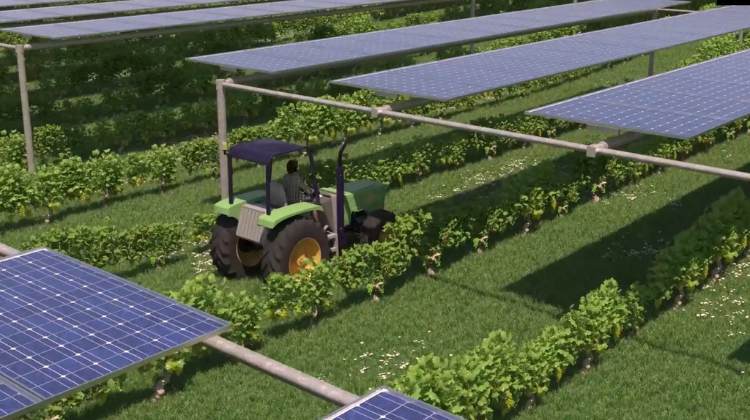Although in other countries such as Italy agrivoltaics is already an established trend, in Spain it is emerging as a strategic field, mainly due to the characteristics of its territory, the need for income diversification in the agri-livestock sector and the wide availability of land.
But it can be seen not only as part of the energy transition, but also as a driver for the development of a specialised photovoltaic industry. This is explained by Martín Behar, Director of Studies, Regulation and Environment at UNEF, who points out that new structural solutions and specific panels mark the beginning of a stage that could consolidate Spain as a European benchmark.
“There are some new solutions that can serve as a reference and show that Spain could take advantage of innovations to reduce costs and boost its own industry,” he emphasises in dialogue with Strategic Energy Europe.
The technology of catenaries, based on posts and cables that hold the panels under tension, reduces costs and allows prices per Watt peak (Wp) very close to conventional photovoltaics. “They are just a few cents apart,” says the executive.
However, he clarifies that profitability should be analysed using indicators that reflect the total land productivity, considering both energy and agricultural production, and not just the kilowatts generated.
Innovation is not limited to civil works. Several panel manufacturers are already developing panels specifically designed for agrivoltaics, with both Spanish and Chinese lines, and also highlighting the use of semi-transparent or organic materials that allow the flow of light to be adapted to agricultural needs.
“The investment appetite is accompanying this process and a clear sign of this was the strong turnout at the two events organised by UNEF in Badajoz and Seville, where major projects were also showcased,” Behar notes.
A growing trend
In countries such as Italy, agrivoltaics is growing rapidly thanks to specific objectives in their energy plans and restrictions on conventional projects.
France and Germany are also moving forward, integrating animal welfare criteria and regenerative grazing practices, which extend the availability of pasture during periods of drought and improve livestock welfare.
“What we propose for Spain is that there should be a three-way relationship: between crops, grazing and the land,” says the UNEF representative.
The Government has already begun to take significant steps. The IDAE this year awarded €77 million to 62 agrivoltaic projects, which include requirements for sensors, control plots and five-year monitoring.
In addition, the Ministry of Agriculture, Fisheries and Food (MAPA) included in the Common Agricultural Policy (CAP) the possibility of registering agrivoltaic land as productive land in Article 9 of the Royal Decrees on direct payments.
This allows agrivoltaic plots to be registered as productive land, something that previously was recorded as unproductive if solar panels were installed.
However, the sector perceives the administrative procedure as complex, requiring several steps before access to aid is granted.
Pending challenges
The future of agrivoltaics in Spain will depend on overcoming five key challenges:
1) Flexible regulation. Avoid technical restrictions on height or transparency that respond to particular interests and allow adaptation to each crop.
2) Clear contracts. Establish a stable model between developer, landowner and farmer or livestock keeper.
3) Avoid “sheep washing.” Differentiate real land management and animal welfare projects from those that only introduce grazing for maintenance.
4) Comparative evidence. Improve the criteria of control plots, avoiding biases resulting from the ban on phytosanitary products in photovoltaic plants.
5) Clear targets in the PNIEC. Include specific objectives that provide legal certainty and accelerate industrial investment.
“There seem to be solutions that are very close to normal photovoltaic prices. There is a significant cost reduction for structural manufacturers,” Behar concludes, convinced that Spain is at a turning point to move from pilot projects to a competitive industrial scale.






























